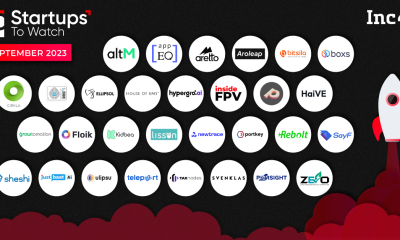Science
Youth plaintiffs in Hawaii reach historic climate deal

A group of young plaintiffs reached a historic climate settlement with the state of Hawaii and Hawaii Department of Transportation in a deal that will push the state to clean up tailpipe pollution.
The 13 youth plaintiffs filed suit in 2022 when they were all between the ages of 9 and 18. In the suit, Navahine F. v. Hawaii Department of Transportation (HDOT), they alleged that the state and HDOT had violated their right to “a clean and healthful environment,” which is enshrined in Hawaii’s constitution.
“We got what we came for, and we got it faster than we expected.”
The settlement, reached on Thursday, affirms that right and commits the DOT to creating a plan to reach zero greenhouse gas emissions from transportation by 2045. To hit that goal, the state will have to dedicate at least $40 million to building out its EV charging network by the end of the decade and complete new pedestrian, bicycle, and transit networks over the next five years. The settlement also creates a new unit within HDOT tasked with coordinating CO2 emission reductions and a volunteer youth council to advise HDOT.
“I am so proud of all the hard work to get us to this historic moment. We got what we came for, and we got it faster than we expected,” the lead plaintiff, Navahine F., said in an emailed statement.
Back in 2018, Hawaii committed to reaching net-zero carbon dioxide emissions by 2045 — in line with what climate research determined was necessary to meet the Paris climate accord goal of stopping global warming. But the state wasn’t doing enough to reach that goal, the plaintiffs alleged. Transportation makes up the biggest chunk of the state’s greenhouse gas pollution.
“Climate change is indisputable,” Ed Sniffen, HDOT director of transportation, said in a press release. “Burying our heads in the sand and making it the next generation’s problem is not pono.”
Youth in Montana scored another historic legal win last year after the first climate case of its kind to go to trial. A state court found that a Montana policy that barred officials from considering the consequences of climate change when permitting new energy projects violated the rights of the plaintiffs to a “clean and healthful environment.” The lawsuit in Hawaii was expected to be the next landmark youth climate case to go to trial in the US. Several other state and federal youth climate suits are still pending in the US.
Science
NASA wants SpaceX and Blue Origin to deliver cargo to the moon

The agency wants Elon Musk’s SpaceX to use its Starship cargo lander to deliver a pressurized rover to the Moon “no earlier” than 2032, while Jeff Bezos’ Blue Origin will be tasked with delivering a lunar surface habitat no sooner than 2033. Both launches will support NASA’s Artemis missions, which aim to bring humans back to the Moon for the first time in over 50 years.
Both companies are developing human landing systems for Artemis missions — SpaceX for Artemis III and Blue Origin for Artemis V. NASA later asked both companies to develop cargo-hauling variants of those landers, capable of carrying 26,000 to 33,000 pounds of equipment and other materials to the Moon.
NASA says it will issue proposals to SpaceX and Blue Origin at the beginning of next year.
“Having two lunar lander providers with different approaches for crew and cargo landing capability provides mission flexibility while ensuring a regular cadence of Moon landings for continued discovery and scientific opportunity,” Stephen D. Creech, NASA’s assistant deputy associate administrator for the Moon to Mars program, said in the announcement.
Science
Brazil leads new international effort against climate lies

Brazil and the United Nations launched a new international effort to combat disinformation on climate change. They announced the Global Initiative for Information Integrity on Climate Change during the G20 Leaders’ Summit taking place in Rio de Janeiro, Brazil.
It’s a collaboration between governments and international organizations to boost research on misinformation swirling online and around the globe that they fear could slow action on climate change. There isn’t much information available yet, but they say they’ll fund nonprofit efforts to counter that spread of lies.
“Countries cannot tackle this problem individually,” President of Brazil Luiz Inácio Lula da Silva said in a press release.
“Countries cannot tackle this problem individually.”
Only Chile, Denmark, France, Morocco, the United Kingdom, and Sweden have joined Brazil in the initiative so far. Countries that make the commitment are expected to contribute to a fund administered by the United Nations Educational, Scientific and Cultural Organization (UNESCO). The initial goal is to get more countries on board and raise $10 to 15 million over the next three years. The money is then supposed to be distributed to nonprofit organizations as grants to support research and public awareness campaigns on climate disinformation.
They haven’t yet named any specific groups they plan to work with; “calls for partnerships” are forthcoming. Some environmental organizations are already working together to study disinformation and push for measures to stop its spread, like the Climate Action Against Disinformation coalition that publishes reports on misinformation trends and advocates for more stringent content moderation.
A webpage for the new global initiative says environmental disinformation is “increasingly spreading through social media, messaging apps, and generative AI.” That has “serious” consequences, it says: “it undermines scientific consensus, obstructs authorities’ ability to respond effectively to the crisis, and threatens the safety of journalists and environmental defenders working on the frontlines.”
FEMA employees faced violent threats on social media in the aftermath of Hurricane Helene in the US, for example. Accounts spewing misinformation about the storm and FEMA were also tied to content denying climate change, according to an analysis by the Institute for Strategic Dialogue (ISD) in October. Posts baselessly accused FEMA of seizing private property and confiscating donations — lies that risked deterring storm survivors from applying for assistance, and that raised fears that FEMA staff might face attacks.
United Nations Secretary-General António Guterres also voiced his concerns during remarks today with both the G20 summit and a UN conference on climate change currently underway. “We must also take on climate disinformation,” Guterres said. “Our climate is at a breaking point.”
Science
Amazon and SpaceX attack US labor watchdog in court

Amazon and SpaceX are seeking to hamstring the National Labor Relations Board, asking a court to declare its processes for upholding labor law unconstitutional. But judges on a three-person panel appeared skeptical when the companies presented their arguments Monday.
In two separate cases before the Fifth Circuit Court of Appeals, the two companies argued that the NLRB is unlawfully forcing them to participate in administrative law proceedings over alleged anti-labor actions. The Amazon case centers around whether it’s required to bargain with the union at its JFK 8 fulfillment center on Staten Island, while the SpaceX case involves a charge by former employees who claimed they were fired after being critical of CEO Elon Musk.
A ruling in favor of the companies could undermine the NLRB’s power to enforce protections for workers. It comes just as vocal pro-union President Joe Biden is leaving office and deregulation-friendly President-elect Donald Trump takes over. Trump notably counts Musk among his chief allies after his massive fundraising push. The NLRB is an independent agency with five board members appointed by the president to 5-year terms.
During oral arguments, the judges mostly prodded attorneys on the finer points of the companies’ decisions to appeal, and the timeline of their objections. At one point, Judge James Graves Jr., an Obama appointee, expressed doubt that Amazon had even met the conditions for an appeal — suggesting it should have waited on the ruling from the district court first. Two days after Amazon’s notice of appeal, the district court denied Amazon’s request for a temporary restraining order on its NLRB proceedings.
Both companies are seeking to short-circuit the NLRB’s proceedings with a court order
George W. Bush-appointed Judge Priscilla Richman similarly pressed SpaceX’s counsel Michael Kenneally about why the company rushed to an appeal, rather than letting the case progress in a lower court. Kenneally said SpaceX waited as long as it felt it could to bring its challenge and accused the government of leaning on procedural arguments because it couldn’t defend the NLRB’s constitutionality. Graves appeared skeptical. “That sounds to me about like the argument that, ‘well, procedure doesn’t matter if I win on the merits, so just skip right over procedure,’” he said.
Both companies are seeking to short-circuit the NLRB’s proceedings with a court order, which requires demonstrating this would cause them irreparable harm. But in Amazon’s case, NLRB counsel Tyler Wiese called the company’s deadline for the district court “imaginary,” and said, “merely proceeding through an administrative process is not irreparable harm.”
Amazon and SpaceX both argue that the NLRB’s administrative proceedings are tainted because its board members or administrative law judges are unconstitutionally insulated from removal. They point to Article II of the Constitution, which says the president must “take care that the Laws be faithfully executed,” which they say includes removing officials.
Amazon also says the NLRB is violating the Seventh Amendment, which protects the right to a jury trial in certain civil cases. It argues that the NLRB shouldn’t be allowed to decide on financial remedies related to the case because it would deny the company due process. Cox said the board itself “improperly interfered with the [union] election by exercising its prosecutorial authority,” so failing to stop the proceedings would let the NLRB as as judge and prosecutor.
The NLRB says it feels confident in a 1937 Supreme Court ruling on the constitutionality of the National Labor Relations Act. “It is nothing new for big companies to challenge the authority of the NLRB to enforce workers’ rights so as not to be held accountable for their violations of the National Labor Relations Act,” NLRB General Counsel Jennifer Abruzzo said in a statement. “While the current challenges require the NLRB to expend scarce resources defending against them, we’ve seen that the results of these kinds of challenges is ultimately a delay in justice, but that ultimately justice does prevail.”
-

 Startup Stories1 year ago
Startup Stories1 year agoWhy Millennials, GenZs Are Riding The Investment Tech Wave In India
-

 Startup Stories1 year ago
Startup Stories1 year agoStartups That Caught Our Eyes In September 2023
-

 Startup Stories1 year ago
Startup Stories1 year agoHow Raaho Is Using Tech To Transform India’s Fragmented Commercial Trucking
-

 Startup Stories1 year ago
Startup Stories1 year agoMeet The 10 Indian Startup Gems In The Indian Jewellery Industry’s Crown
-

 Crptocurrency9 months ago
Crptocurrency9 months agoLither is Making Crypto Safe, Fun, and Profitable for Everyone!
-

 Startup Stories1 year ago
Startup Stories1 year agoHow Volt Money Is Unlocking The Value Of Mutual Funds With Secured Lending
-

 E-commerce1 year ago
E-commerce1 year agoTop Online Couponing Trends To Watch Out For In 2016
-

 Startup Stories1 year ago
Startup Stories1 year agoWhy Moscow-Based Kladana Considers Indian SME Sector As The Next Big Market For Cloud Computing




